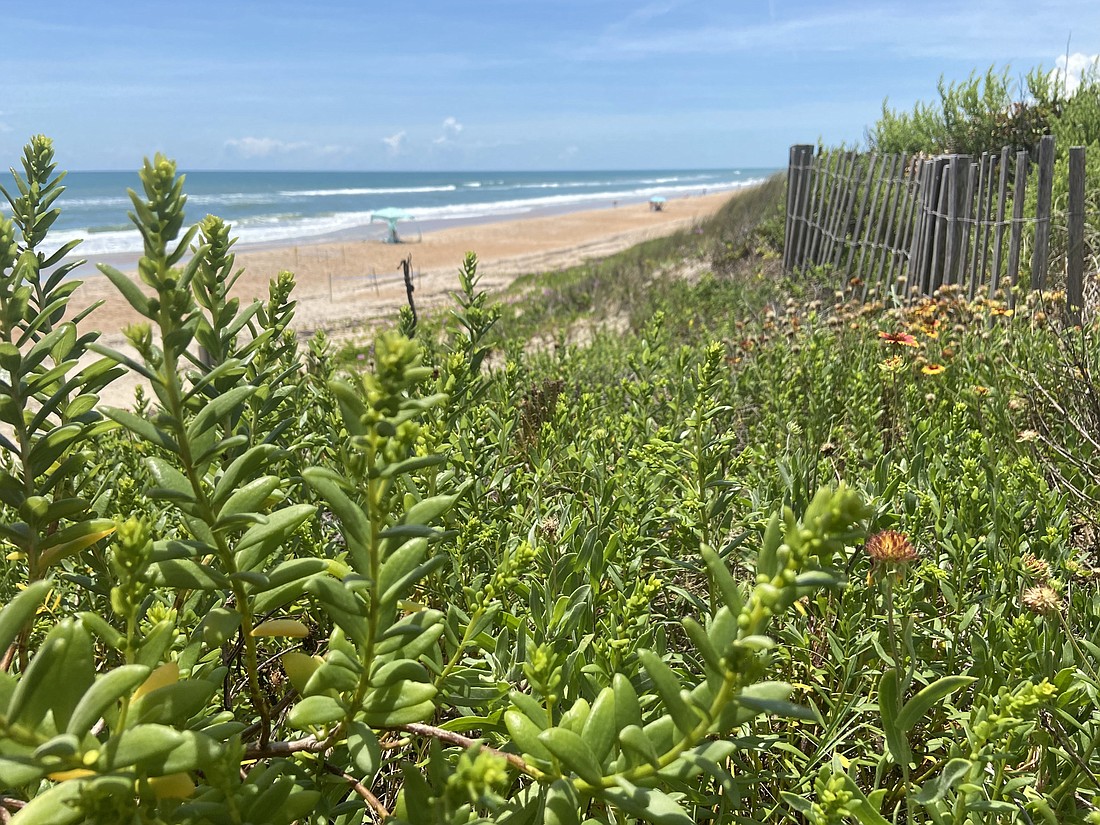- April 18, 2024
-
-
Loading

Loading

Sand dunes in Ormond-by-the-Sea and Flagler Beach are about to get a plant boost from the Florida Department of Transportation.
A project starting on July 5 seeks to install and establish native sand dune vegetation along A1A from Spanish Waters Drive in Ormond-by-the-Sea to Shelter Cove Drive in Beverly Beach. FDOT states in a project flyer that the $500,000 project will not disturb existing vegetation, but is meant to fill in gaps and supplement where vegetation is needed.
"Restoring dune vegetation in these areas throughout Flagler and Volusia counties will support the existing dune ecosystem," said Peyten Maki, an FDOT spokesperson in an email.
FDOT will install multiple species of dune vegetation, such as Simpson's Stopper, silver saw palmetto, blanket flower, dune sunflower, railroad vine, beach elder and sea oats. Once planted, the vegetation's roots are meant to stabilize the dunes by anchoring sand in place, lessening erosion from wind and rain, Maki explained. The vegetation is also meant to deter motorists from parking along the dunes in unauthorized areas.
FDOT predicts the project will be completed in the fall. There are no lane closures or detours expected and the new vegetation installed will not be taller than what is already there.
"Throughout the course of the project, the contractor will employ temporary protective methods to safeguard the newly planted vegetation from vehicle disturbances and other factors," Maki said. "The methods used to safeguard the plantings after installation will be at the contractor’s discretion to ensure the vegetation flourishes and establishes properly."
Area environmentalists are hopeful that the project will be successful in strengthening the dunes, many of which were weakened during Hurricane Matthew in 2016 and have yet to fully recover.
"But a great deal of their success, quite frankly, based on the experiences of what we've seen here over the last six years especially, is going to depend upon the cooperation of residents and visitors and people driving up and down A1A," said Melissa Lammers, vice-chair of the ECHO Volusia Forever Alliance and past president of the Halifax River Audubon.
Protecting dunes means protecting the beach, without having to put up seawalls. The dunes serve as the first line of defense during a storm surge, explained Lammers who is an Ormond-by-the-Sea resident herself. What holds the dune in place are the roots of the native vegetation.
"So when you have big heavy cars driving over that vegetation, it can't grow, and then you don't have the roots, so you don't have the strong dunes and you don't have the defense," Lammers said.
Lammers said cars often stop in areas marked with no parking signs, and that many people don't see an issue with it. The same goes with pedestrian traffic, which had harmed some areas of dunes prior to Matthew.
"The more that folks can be educated to understand that it's not a frivolous request of them to not walk down the dunes and to not drive onto the shoulder of A1A, the better, because that's what's ultimately going to protect the road from a wash-out like it happened in Flagler Beach with Matthew," she said.
As vice chair of the Ormond Scenic Loop and Trail Corridor Management Organization, Rob Bird, also of Ormond-by-the-Sea, said this is an issue of concern. He and Lammers have both been working with FDOT over the last year to address dune vegetation weaknesses caused by both prohibited vehicle and pedestrian traffic in the dunes near their neighborhoods.
"What happens on the A1A stretch of the Loop has been a concern for us for a long time, and we think that this is a good project, and we hope it's going to succeed," Bird said.
Maki said the project has been in the works since 2020 when FDOT, after considering citizen feedback, identified dunes in need of more vegetation. Work will begin in Volusia County first before work in Flagler County — which could soon see the beginnings of a separate $25 million Army Corps of Engineer project to create a protective beach dune along 2.6 miles of its coast —is slated to begin.
There's always a chance storms could damage dunes, Bird said.
"But if they're maximally-resilient, then to the extent they damage them, that can be repaired by the plants that trap sand," he said. "So that's why the fortification of the dune is so important."